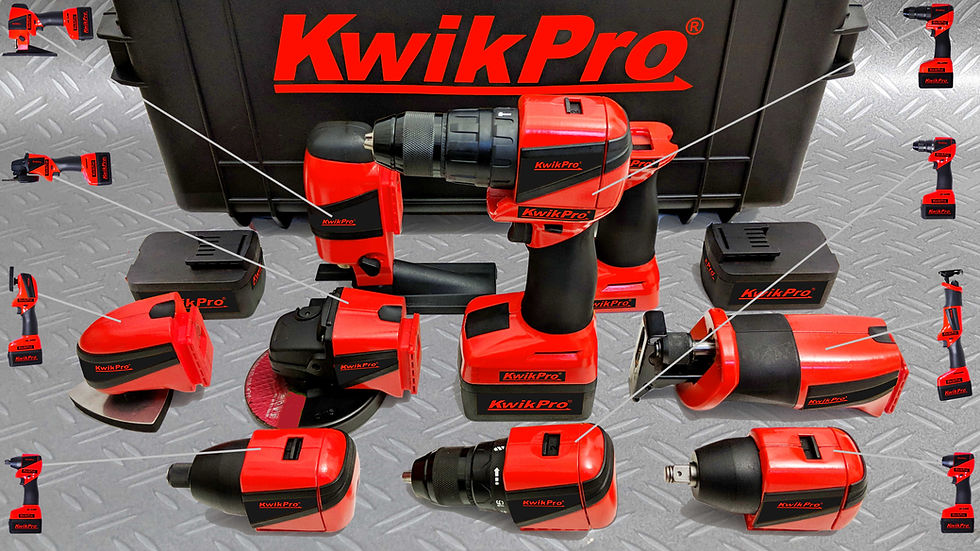Cordless Tool Power - a short discussion
- Robert
- May 26, 2018
- 3 min read
Updated: Mar 1, 2019
Without getting too technical, mechanical power is all about rotational force and speed, and electrical power is about voltage and current.
Unlike corded power tools, cordless power tools mostly don’t show the power input or output on their rating plates. There are four main places in a cordless power tool that most determine the final power output: the battery, the control system, the motor and the gearbox. Each of these parts behaves in different ways when the power tool is in use.

Battery
As the charge depletes, the power a battery can provide also normally reduces. However, this is not the whole story. Cordless power tools often work their batteries very hard. The thing is batteries like an easy life! Providing full power for even a few minutes is not what a battery enjoys! Normally the bigger the battery the easier its life will be when connected to the same power tool. Battery technology is very complex and the numbers written on a battery, the voltage in V and the capacity in Ah, can’t tell the whole story. Suffice to say, like with many things in life, it’s about the quality. For more details see blog post: Talking battery performance.

Control system
If a cordless power tool has variable speed then it will have a control system. On brushed power tools this normally regulates the electrical power to the motor at the start and, on some, it also continues to do so all the way to full power. On some, with higher performance, when the throttle trigger is pressed fully the control system is bypassed by a switch which improves the efficiency. On a brushless power tool bypass is not possible, as the motor will not work without the control system. A well-engineered brushless control system can be much more efficient than a poorly designed system. Bottom line, don’t assume that all power tools have control systems that have the same power efficiency.
Motor
Some cordless power tool motors can be quite efficient at converting electrical power into mechanical power. However, if a motor is running hot then it is not efficient. The efficiency of the motor in a power tool is often an engineering compromise. In some, this compromise can make the overall efficiency of the power tool much lower if it is not used as intended, with consequent reduction in battery run time.

Gearbox
The quality of a cordless power tool gearbox can make a massive difference to how well the power tool performs and how long it runs. Consider that a gearbox is a series of gears with shafts and bearings. These all have to be turned by the motor. This absorbs power even before the power tool has done the job you want it to do! A heavy duty gearbox may have higher friction than one designed for less arduous work. Performance, efficiency and longevity all force design compromises.
Conclusions
So, the power output from cordless power tools is perhaps more complicated than it might at first seem. The cordless power tool with the greatest efficiency may not be the power tool that will do the job you need it to do. So when you decide on which cordless power tools to buy, choose the system that is designed for the kind of use you are likely to need it for. The power tool manufacturer has optimised the power tool for that purpose.
KwikPro power tool systems use motors, gearboxes, control systems and batteries that have all been carefully specified to provide the optimum power and performance and to work as efficiently as possible as drills, drivers, grinders, saws or multi-tools according to the duties for which they are intended to be used. KwikPro Gold for frequent heavy duty work and KwikPro Silver for more occasional medium duty use.
© Copyright 2018-2019 - Power Tool Systems Limited - UK - www.kwikprotools.com







Comments